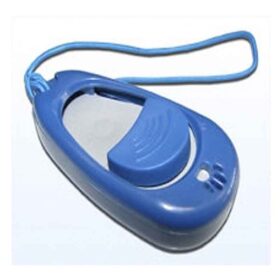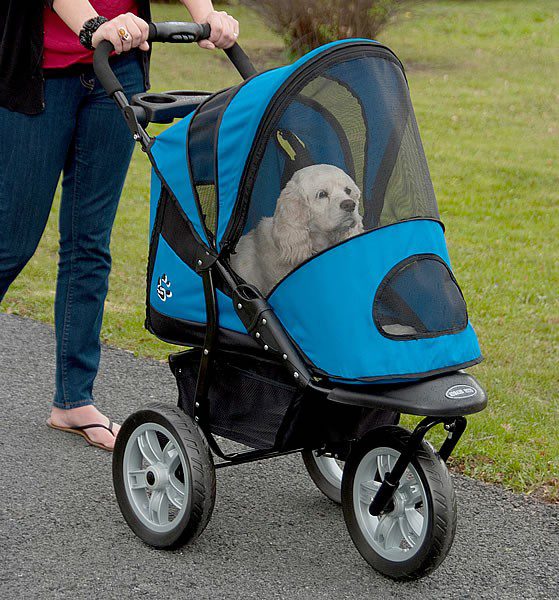Content |
|---|
The right bowl
Bowls naturally belong to the top of our puppy checklist. In any case, you will need two at the beginning, one for food and one for water, which should always be available for free. You can choose between a decorative feeding bowl, with legs, or a high quality stainless steel feeding bowl. Also those who prefer a raised stainless steel feeder, that is to say, with a nice paw print or bone, they will find what they are looking for. Especially for large breed dogs, the height adjustable bowls, like the ones attached to this dog bar, including two stainless steel bowls, they are a good way to adapt the bowl to the respective size of the puppy up to an adult quadruped. In this way it allows you to have comfortable meals at any time.
Our advice for the road:
A practical solution for long trips or hikes is a water bottle with a water dispenser. So you can easily give your dog something to drink everywhere.
The right strap
The proper leash for the dog is part of the starting kit for puppies.
The correct leash for the dog should not be missing when moving a puppy. The high quality and durable nylon harness with strap 200 centimeters is an ideal aid for wind and weather.
Talking about walking: In the dark season, walks with your four-legged friend usually take place at dusk or in the dark. If fog is added to this, the puppy is already hard to see at the other end of the leash. Cyclists or motorists cannot see you in dangerous situations. So, a plus of security is provided by the appropriate illuminated accessories, like reflective cables or collars.
You can take another step to safety with a chrome address label. In the silver capsule you can store your address and phone number and practically stick them to the necklace. If your partner gets lost, search engines can use it to locate you quickly. However, a phone call is still the easiest way to contact lost dog owners.
Create a suitable retreat
The next point on our puppy list: All dogs appreciate a cozy place to snuggle and rest, no matter how many outdoor adventures may tempt. These retreats are also very important to help your puppy settle in. Young animals, in particular, they sleep a lot, some even 20 hours a day. There are many ways to provide your pet with one or more comfortable places to sleep.. Blankets, that can be used on the sofa, bed, the basket or the floor, are particularly useful. These blankets, that can be used everywhere, not only offer your four-legged friend a warm place, they also protect your furniture from dog hair or dirt.
Cozy baskets for dogs
A sturdy place to sleep is provided with hygienically washable plastic baskets, which should always be complemented with a pillow of adequate size. Of course, there are also games that have a matching dog pillow. This gives you a full bed that your puppy only needs to snuggle into. Before buying, it is best to consider how big your dog will be when he grows up. Then you will enjoy the basket even longer.
Dog's Toys
Cub's First Team Classic
just rested? So a little game is useful. Of course, the right toys are also part of the puppy's starting kit. The choice of toys is huge, but some classics are very popular with almost all puppies.
The rubber ball with a long rope is very popular. With the help of the rope of approximately 30 centimeters long, the ball can be thrown far even by starters without great throwing skills. In this way, can make catch up games especially exciting for your pup.
Multi-Clickers are particularly suitable for sound-based dog training.
A Multi-Clicker also produces clear sound that cannot be confused with ambient sounds.. During training, the quadruped gets used to the acoustic signal and thus reinforces positive behavior. The sound of the Multi-Clicker is also adjustable in volume and pitch, facilitating training with various animals.
Getting the puppy to be house trained…
One thing quickly becomes a test of patience when it comes to getting puppies used to the house.. Training pads help you get through this time. The pads can be used with the Puppy Trainer. So you have the absolute certainty that nothing will leak.
But you can also use the pads without this base. Its bottom is coated, so that urine does not reach the carpet or the floor. The water and odor absorbing gel contained in the pad absorbs the liquid. Make sure the surface is dry again after half a minute.
Puppy training pads help you train your puppy at home.
Put your pup on the pad and reward him amply when he's done his business here. Then, every day, pull the training pad a little more towards the front door. Continue this procedure until your puppy has learned to do his things outside the house. Change the pad after each use so your puppy is always comfortable in it. The pads are also great for old or sick animals, by the way.
Well cared for from head to toe: the right shampoo
Puppies' skin is sensitive. So, you should only use mild shampoos.
If your new roommate comes home with dirty hair from all his adventures, a dog shampoo should be part of the puppy's starter kit. It is important to dry your little companion well so that he does not get cold after the bath.
Always follow your nose: familiar smells
It is an advantage if the puppy is already used to its smell. If you visit the breeder some time before moving, you can leave a used piece of clothing for the future roommate. In this way it is already something familiar and makes it easier for the puppy to get used to its smell.
The food your puppy receives in its new home for the first few days should also be familiar. This means that, even if you plan to change your puppy's diet, do not change it until it has settled in and gives you familiar food.
Old house smells can also help once you've settled in. Let the breeder give you a blanket or towel that smells of the breeder's house and the puppy's siblings to help your four-legged friend start over..
Traveling home by car
Before moving, the little puppy should not be given food for a few hours so as not to vomit from excitement. It is important that the car trip is pleasant for your dog. This is because it could become something formative for him. If that is not the case, could develop a lasting aversion to driving.
Important: If your puppy complains while driving, Please, ignore. no matter how hard it is. The attention would encourage him to do so and he could develop a permanent habit of complaining while driving. In its place, radiate calm and confidence, to be transferred to your puppy.
Move to your new home
Once your puppy has entered his new home, first show her all the places where her basic needs are met. Take it to the nearby release point, as it is very important for your future training at home. Bring it here at regular intervals anyway, when i start sniffing around in circles.
Then show your puppy a bowl of water and offer him some of his family food. Don't worry if she gets turned on and doesn't want to eat at first. Now you can safely explore the house or a toy, or take a nap. In any case, make him familiar with his sleeping place.
Restrict the exploration tour to two or three rooms at first, so that your dog is not overwhelmed by new stimuli. On the other hand, also to set limits for him from the start. Make sure the environment is calm and remember how unfamiliar the situation is for the little furball – a lot of movement is required here!
If the puppy meets a dog in your home, first keep them on a leash and don't leave them unattended. Visiting friends and family who want to admire your beloved pet is counterproductive at first. Children should also be encouraged to let the puppy get there first. After two or three days, the puppy will have gotten used to his new home and can receive his first visit, not very impetuous.
The place to sleep
Clumsy, beautiful, helpless – little puppies are happy to read every wish of the big eyes. Especially when they seek the closeness of their pack and snuggle trustingly in bed at night with their newly beloved bipeds.. But, consider in advance if you would like to have a dog in bed permanently and also consider its future size and splendor of its coat.
If the puppy is used to sleeping in bed, the adult quadruped will also want to spend the night there. It will be hard work to train this again. It is best to establish a comfortable place to sleep for him right at the beginning, for example, next to his bed. A dog crate is very suitable for this purpose and, together with the blanket from the breeder's house, can become a “den” trustworthy in which your newcomer feels completely safe.
Dog owners should consider in advance whether they are allowed to sleep in bed with them.
If you don't want your dog to sleep in the room permanently, you should accustom him to his future sleeping place immediately. But, you should not let him sleep there alone on the first few nights. A puppy that has had to leave its family pack and is now left alone in a strange environment can develop enormous fears.
Some dog owners may recommend leaving the puppy alone anyway.. The howling and whining will soon cease. But dogs with such a drastic experience of being alone often develop behavior problems..
Calm and patience
Crucial for the acclimatization of the puppies are above all calm and patience. Especially at the beginning of the coexistence, you should spend a lot of time with your new roommate. If you have a job, before moving, think carefully about how you can reconcile this with your puppy. You should take at least the first two weeks off to be there for your new partner..
Puppies should never be left alone for more than two hours before four months.. Set clear boundaries from the start. But always keep in mind that your pup still has a lot to learn and you should look past small mishaps without scolding.. Puppies need a lot of sleep during the day and their ability to concentrate is limited to a few minutes. So avoid overstimulation in your new home.
A summary of tips for puppies to get used to their new home:
- A feeding bowl and a water bowl, which should always be freely accessible
- Dog leash for walking and dog poop bags for the trail
- Bed for dog, dog pillow and dog blanket for a comfortable place to sleep
- Dog toys for fun and games
- Dog treats and snacks as a reward
- Training aids like whistles or clickers
- Mild shampoo for dogs
- Carpet or pads to train the puppy in the house.















